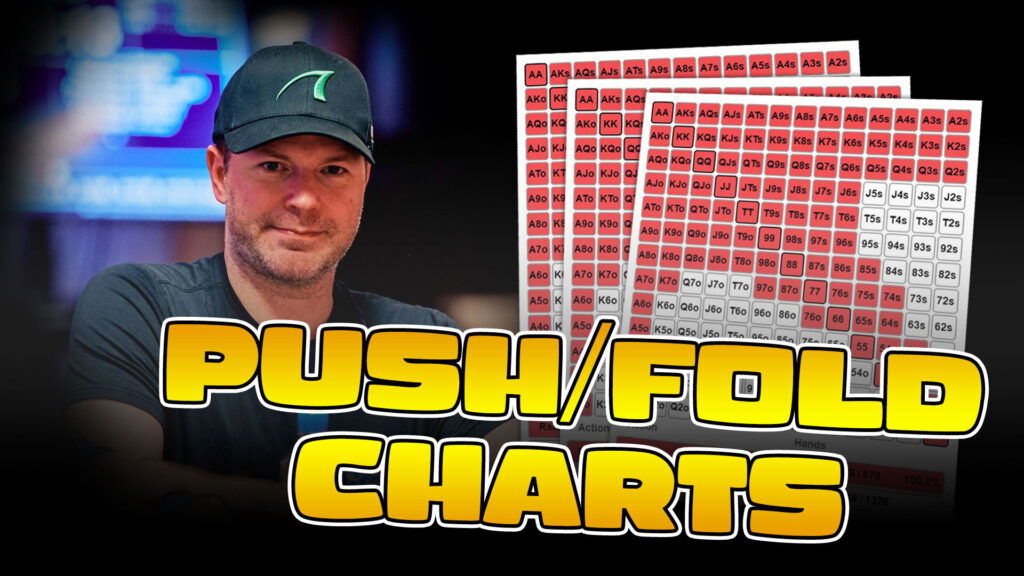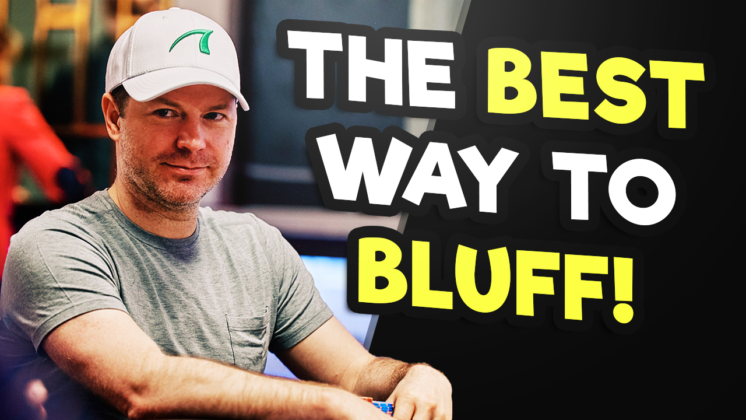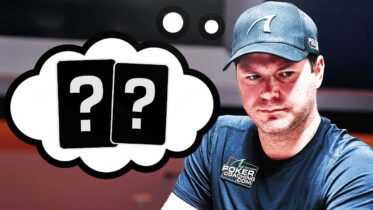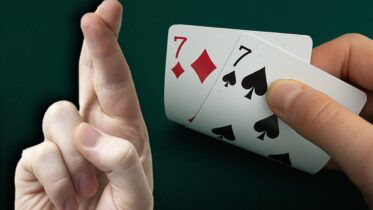When I discuss the game of poker with people who do not play regularly, often I will hear them say “I would be an awful poker player, I’m terrible at lying!” or “I’m no good at cards, I have a terrible poker face!” By saying these things, these people are obviously referring to not knowing how to bluff.
Although a lot of success in poker is dictated by how well you can play the good hands you are dealt, the ability to bluff effectively in the right spots is critical to your overall success. Every poker player knows that you cannot “have it” every time, which means every now and then you must be able to pull off bluffs. That said, there is a science to properly bluffing, and in this article, I will share with you my system for optimally bluffing in poker games.
Knowing When To Bluff Strategically
Bluffing in poker goes far beyond simply trying to psych out your opponent are intimidate them with aggression (or at least, it should go beyond that if you want to win money). Many recreational poker players decide to attempt bluffs when they are in spots where they know they cannot win the hand. While being behind in a hand is sometimes relevant when deciding to bluff, there are plenty of other variables worth considering before pulling the trigger.
To make your life easier at the cash game and poker tournament tables, I have compiled the following five questions worth asking yourself when deciding whether or not you should bluff. By allowing these questions to guide you, you can achieve a bluffing frequency that closely follows a GTO strategy.
Is Your Opponent Capable Of Folding?
Do you lack showdown value?
Do you have value hands in your range?
Do you have relevant blockers or unblock auto-folds?
Does your bluff tell a credible story?
Is Your Opponent Capable Of Folding?
After reading this question, you may say to yourself “my opponents never fold!” It may be that your opponents are in fact capable of folding, but you are just executing bad bluffs! That said, I recognize opponents who are calling stations or are simply bad poker players may struggle to fold as much as they should. If you are facing a calling station, it is likely in your best interest to play exploitative poker and avoid bluffing due to the likelihood that you will be looked up. While calling stations do exist, they serve as an extreme example when considering what your opponents are capable of folding.
Now, let’s say instead of a calling station, you are attempting to bluff your standard recreational $1/$2 player. The important factor to consider is not whether they never fold or always fold, the question is are they capable of folding in reasonable spots. If your opponent is holding a marginal hand like middle pair, will they fold to a large enough bet? If the answer is yes, you have successfully identified your opponent as “bluffable”.
Do You Lack Showdown Value?
If you know for a fact your hand cannot win at showdown, you should be more inclined to attempt bluffs. The biggest problem with this concept is many poker players at the low stakes do not know how to accurately assess their showdown value. Quite often, a hand like bottom pair should be bluffed not only because it lacks showdown value, but it also blocks hands like full houses and two pairs. It may sound crazy to consider bluffing with a hand like bottom pair, but you would much rather bluff with bottom pair than king-high as you unblock your opponent’s auto-folds.
Auto-Folds: Hands opponents will fold to any bet.
Do you have value hands in your range?
It is important to consider the range of you and your opponent before attempting bluffs. When assessing your range and its connectivity with the board, if you can identify a decent amount of value hands in your range you are in an optimal spot to bluff. What hands qualify as value hands? Usually, hands as strong as top pair and better are what you would consider “value” hands. If you have a number of such hands in your range but have total garbage, pull the trigger and attempt a bluff!
Do you have relevant blockers or unblock auto-folds?
For those who are unfamiliar, a blocker is a card you hold in your hand that “blocks” your opponent from having not only that card but other hand combos that contain it. If you happen to have a relevant blocker in your hand, you should strongly consider bluffing as having a relevant blocker increases the likelihood that a bluff will get through. What qualifies as a relevant blocker? Relevant blockers consist of cards that block the nuts as well as hands that your opponent will always call with. If there are three diamonds on the board and you hold the A♦, you block the nut flush and should execute a bluff if you only have ace-high.
Assessing Hands You Unblock
Somewhat the opposite of assessing hands you block, it is also important to consider whether you unblock the auto-folds in your opponent’s range. Harkening back to a previous example, hands like king-high qualify as auto-folds as they lack showdown value. If your hand does not contain a king and there is no king on the board, you essentially unblock your opponent from having king-high, and in turn, should consider bluffing. While it may take some practice to apply the thought process to your game, always consider not only what you block, but what you unblock as well.
Does Your Bluff Tell A Credible Story?
Throughout the course of a poker hand, each action you take essentially tells a story to your opponents. If you are considering executing a bluff, it is important the actions you have taken prior to a spot resemble actions you would take if you held a premium value hand. A lot of novice poker players have the habit of playing their value hands one way and their bluffing hands another way. If you are facing opponents who are at least somewhat decent, they will be able to quickly pick up on the differences in your approach and easily recognize when you have it and when you don’t.
Checking the flop, turn, then blasting on the river with air does not tell a credible story if the board is not correct. Before risking a lot of or all of your stack with a bluff, make sure you consider whether the bluff is believable or not.

Make the best preflop decisions with Jonathan Little’s Push/Fold Charts!
How Much Should You Bet When You Bluff?
Once you decide that you are going to attempt to bluff your opponent, you must consider how big of a bluff bet you are going to make. To disincentivize your opponents from calling, most of your bluff bets should be for a big size, but that does not mean you should bet big with your bluffs every time. Much like my list of questions to consider when deciding whether or not to bluff, here are my list of questions for when you are considering your bluff bet size.
Do you have zero showdown value?
Does your opponent have marginal-made hands in their range?
Do you unblock many nut hands and can you represent them?
Are you trying to bluff your opponent off of a strong hand?
Do you have zero showdown value?
Although GTO recommends mixing your bet sizes when bluffing with little to no showdown value, I recommend only betting a big size if you lack it. Some highly skilled poker players are able to strike the proper frequencies when mixing their bet sizes, but such “mixing” is hard for most people to implement. To make your life easier, I recommend simply bluffing with a big bet size when you lack showdown value, and bluffing with a small bet size when you have some showdown value.
When considering what best size to bluff with, be sure you take your opponent’s tendencies into account. Some of your opponents will be willing to make loose calls to small bluff bets with only ace high. If you are attempting to bluff such an opponent, do not make a small bluff bet if you only have eight-high, as there is a low probability it will get through. Facing such opponents, bet big as it will give you a better chance of winning the hand.
Does your opponent have many marginal-made hands in their range?
Marginal-made hands are usually auto-calls for small bets and auto-folds for big bets. If your opponent usually check-raises top pair and better on the flop, but in a particular hand they check-called both the flop and the river, it is highly likely they have a marginal hand. Are you trying to bluff this opponent off of a marginal hand? Well, in that case, you should bluff with a big bet size.
Consider a hand where your opponent’s range and actions suggest they either have the nuts or an auto-fold hand. If you have a marginal hand that beats eight-high and an assortment of busted draws, you can get away with bluffing for a small size as it is unlikely you will get called. Rule of thumb: the more polarized your opponent’s range, the more often you can bluff with small bet sizes.
Do you block many nut hands and can you represent them?
The more nut hands you block, the more nut hands you can represent with your bluffs. If you are trying to convince your opponent you have one of the best hands possible, it makes sense that you would be for a big size. When attempting big bluffs in cash games and poker tournaments, some of the best ones you can execute are ones where you can optimally represent the nuts. Remember though: be sure you have told a credible story on each betting street when attempting to represent the best hand.
Are you trying to bluff your opponent off of a strong hand?
By strong hands, I am not referring to the nuts, but decent hands like top pair with no kicker or middle pair. If you are trying to force your opponent to fold a decent hand, you will have to bet for a big size to get your bluff through. Never forget pot odds, as any reasonable opponent will never fold top pair to a small bet. Even though it may require you to put your whole stack at risk, to successfully bluff your opponent off of a good hand you must get over your fear of losing chips.
Three Truths About Bluffing At The Small Stakes
Truth #1: Players at the low stakes do not bluff enough
Truth #2: Players are often afraid to overbet when they bluff
Truth #3: Players are afraid to bluff when they play live
Truth #1: Players At The Low Stakes Do Not Bluff Enough
Live, small stakes cash games remain incredibly profitable as most of the player population does not know how to properly bluff. Not only do low stakes players struggle knowing when to bluff, a lot of them refuse to attempt bluffs altogether! Even when they reach the river and a lot of money goes into the pot, players struggle to execute big bluffs because they are scared to lose money. While it certainly does sting when your bluff gets “caught”, realize that sometimes the only way to win money is by bluffing. By simply checking back and giving up, you rob yourself of the opportunity to steal a sizeable pot!
Truth #2: Players are often afraid to overbet when they bluff
Many players at the small stakes are terrified of executing overpot bets as bluffs. When they bluff, usually they only bluff for no more than the pot. Not only should this motivate you to make big, overpot bets with your bluffs, but you should also overfold to your opponents when they bet big. If you know your opponents rarely make pot-sized or overpot bets on the river with bluffs, you can exploitatively fold by recognizing their tendencies.
Truth #3: Players are afraid to bluff when they play live
When playing poker online, unless you insisted on having your username be your legal name, online poker rooms offer you a layer of anonymity. When you’re “pressing buttons” in a $5 tournament on WSOP.com, you may not be that embarrassed when your 150% pot overbet doesn’t get through. However, if you attempt the same bluff for $300 in your local poker room’s $1/$2 game, if your bluff gets caught you may be embarrassed. Here lies the third truth of why some low stakes players struggle to execute bluffs: they are embarrassed of having their bluffs get caught.
If you want to have success and eventually move up stakes, you must get over this mindset. Trust me, the more experience you get bluffing in live cash games and poker tournaments, the less self-conscious you will be when your bluffs fail. Also, don’t forget, sometimes your bluffs will work and reward you with huge pots!
The Spectrum of River Bluffing Aggression
While I have mostly discussed bluffing at the small stakes throughout this article, the following “spectrum” chart below applies to all stakes. As you encounter a wide array of poker players at the tables, all of them will fall somewhere within this spectrum when it comes to their bluffing frequencies and aggression. You will rarely come across players you reach a Perfectly Balanced (Level 6) standing when it comes to bluffing. Although some of these players are out there, if you play the small stakes most of your opponents will remain within levels 1 through 3.
Levels of River Bluff Aggression:
- No balance: No bluffs on the river and only bets for value
- Unbalanced: Severely underbluffs river with no clear logic for choosing bluffs
- Somewhat Balanced: Moderately underbluffs river with most obvious bluffs
- More Balanced: Slightly underbluffs river turning additional hands into extra bluffs
- Well-Balanced: Capable of turning non-obvious hands into additional bluffs if needed
- Perfectly Balanced: Expert at turning non-obvious hands into additional bluffs if needed
Conclusion: The Best Way To Bluff In Poker
When you play small stakes cash games, the “money factor” and risk of each decision can make it hard to play optimally. Sometimes, to have the best chance of winning a pot you will have to execute a bluff worth your whole stack. To the average guy, losing $300-$400 dollars is certainly not enjoyable. However, if you elect to simply give up on every river and only add money to the pot when you have the nuts, you take the “game” out of poker and turn it into simply “who has the best hand?” By studying regularly and keeping a proper poker bankroll, you can be better equipped to bluff and be more confident when you do so. Apply the lessons from this article to your game, and your opponents will never quite know what you’re holding!




“.. If you happen to have a relevant blocker in your hand, you should strongly consider folding as having a relevant blocker increases the likelihood that a bluff with get through.”
Is there a typo here?
Good catch, thank you Leon!